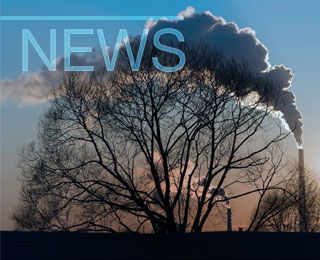Plans for a new superquarry on the remote island of Harris by Lafarge are back in focus with a new court hearing expected this week. The plans have re-ignited the issue of Lafarge's earlier decision to give a UK£3.5m donation to the World Wildlife Fund to help fund its many projects around the globe. In fact, senior conservationists in the WWF have fallen out over this donation, with the British arm of WWF refusing to accept its share of the £3.5m sponsorship deal with the multinational Lafarge in protest at its attempts to build Europe's largest ever quarry on Harris, Scotland.
This week, Lafarge will go to the High Court in Edinburgh to appeal against an official decision to turn down its application to mine 600Mt of stone over the next 60 years from a conservation area on the Hebridean island's coast. The proposed quarry, which lies in the middle of a legally protected National Scenic Area, is now being opposed by residents on Harris, ministers in the Scottish Executive and infuriated environmentalists. They claim that half of Roineabhal mountain would be cut away, leaving a scar eight times higher than the White Cliffs of Dover and a 180m-deep crater which is certain to flood. Although 34 jobs would be created, opponents of the scheme fear it would severely damage Harris's tourism industry.
The row has led to a deep rift within WWF, which is now under intense pressure from other groups, such as Friends of the Earth. The Scottish arm of the Ramblers' Association has warned it plans to challenge WWF's deal with Lafarge at next year's World Conservation Congress in Thailand.
WWF's international director, Claude Martin, has insisted the Lafarge sponsorship deal is too important to abandon since the firm has promised to cut its global emissions of climate-change gases by 10 per cent. This is seen as a major initiative in an energy-intensive industry such as cement and quarrying, and more important than the super quarry. But the dispute has led to "robust exchanges" between Dr Martin and Robert Napier, the chief executive of WWF's British arm. Mr Napier has now refused to accept two payments from Lafarge, worth an undisclosed five-figure sum, and has demanded that his colleagues take a much harder line with Lafarge over the quarry.
The controversy has an added twist: before becoming chief executive of WWF UK, Mr Napier was chief executive of the Lafarge subsidiary Redland Aggregates, which originally tried to open the Harris quarry. He now believes the quarry is unacceptable. "We're arguing within WWF that we've got to keep banging the table on this," Mr Napier said. "Our partnership with Lafarge is up for renewal in March 2005 and we will have to weigh [the super quarry issue] heavily in the balance. "If Lafarge is serious about its sustainability credentials, there's no way it can ever open that quarry."
It is understood that Dr Martin has responded by guaranteeing that WWF will cut its links with Lafarge if it starts the quarry - a compromise offer that both Mr Napier and other WWF executives see as too weak (Edited report from the Sunday Independent Newspaper, UK).
